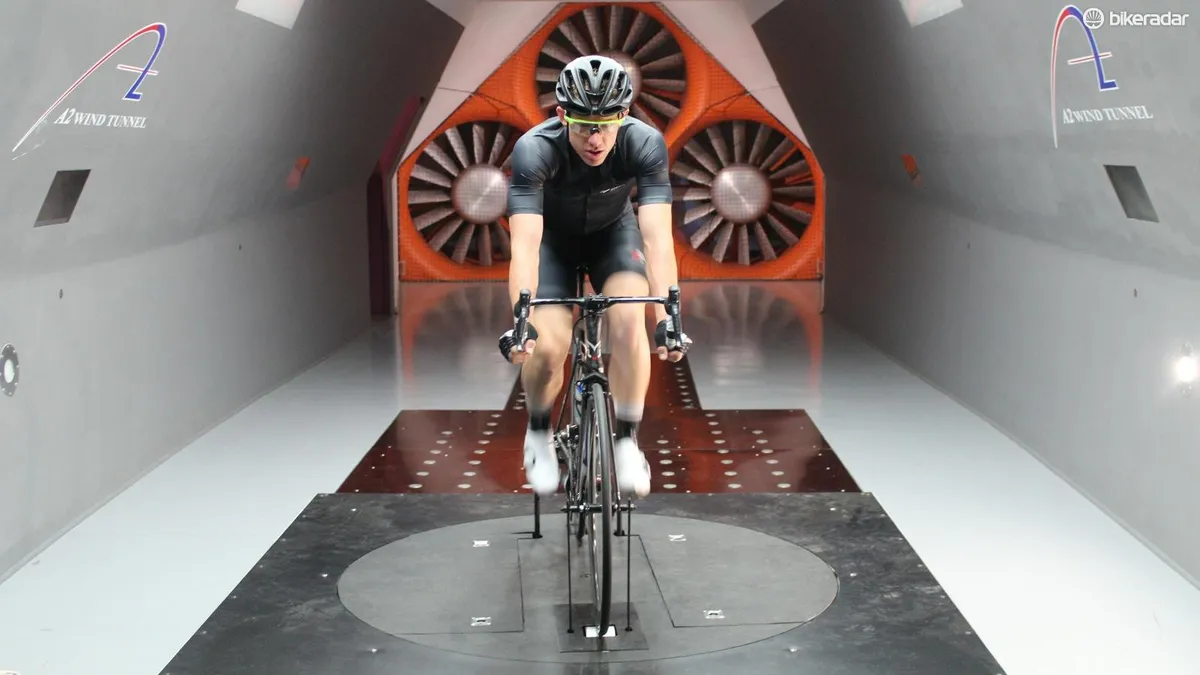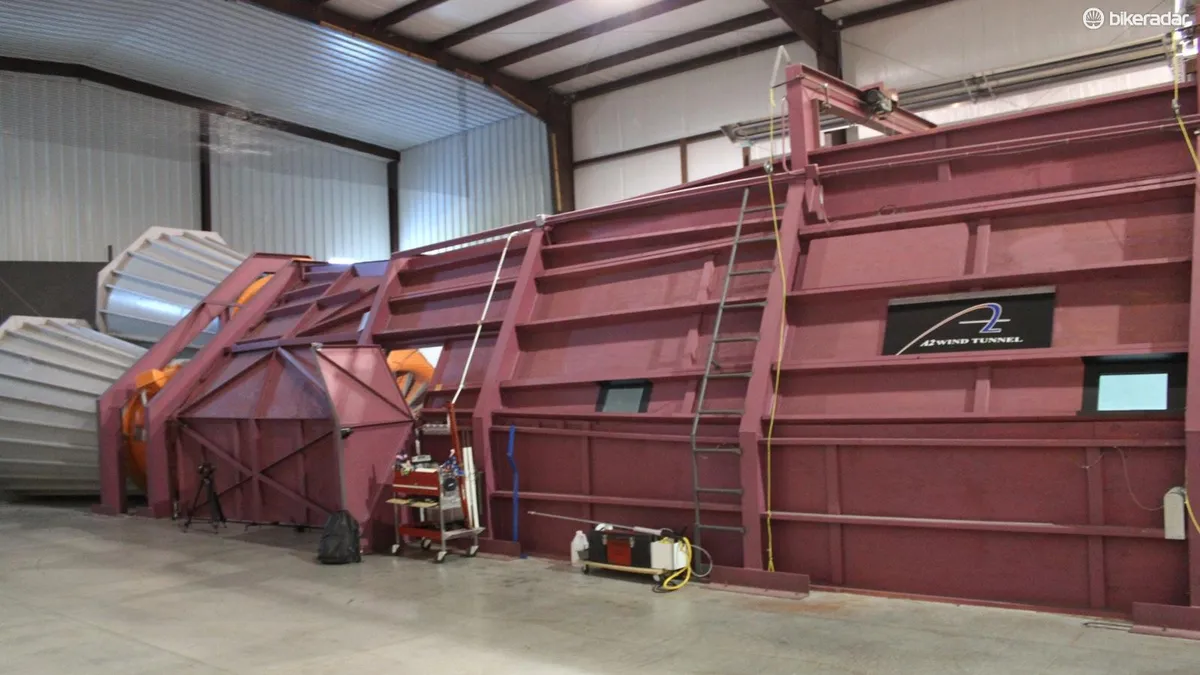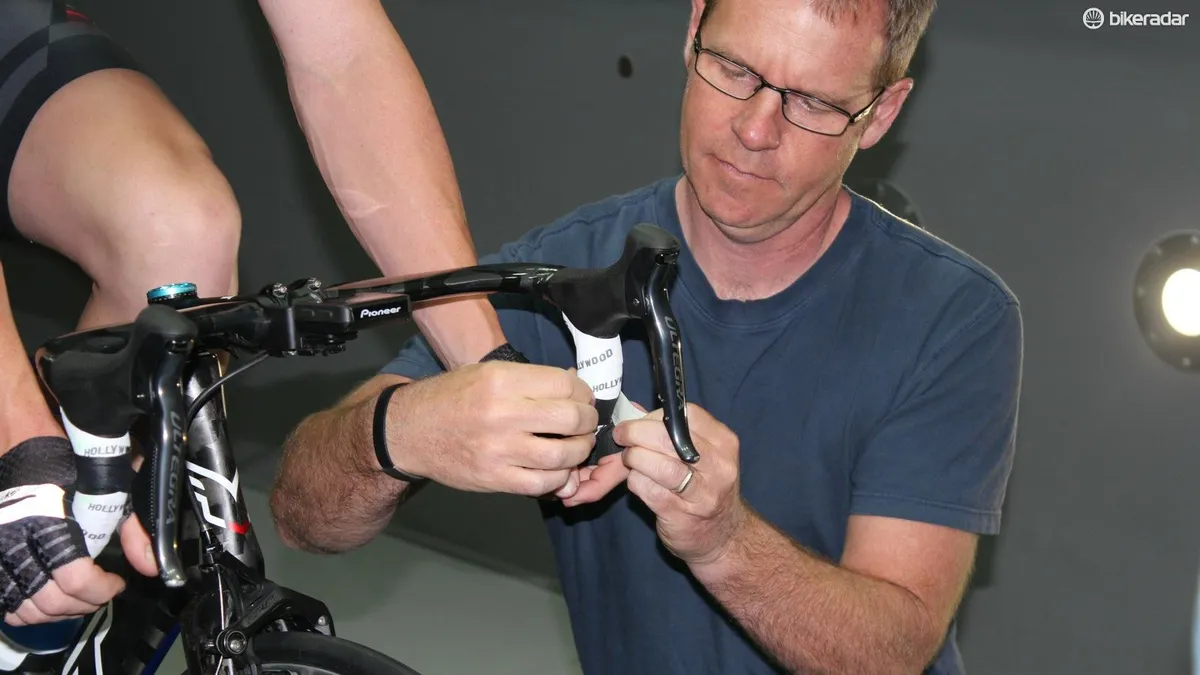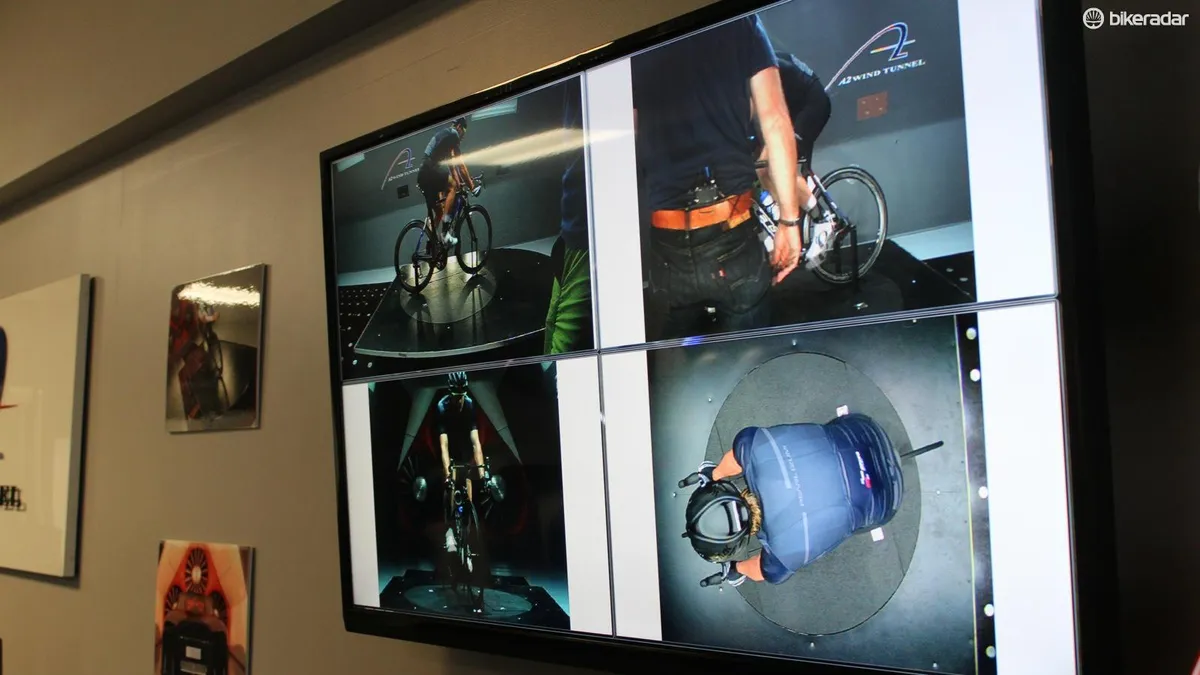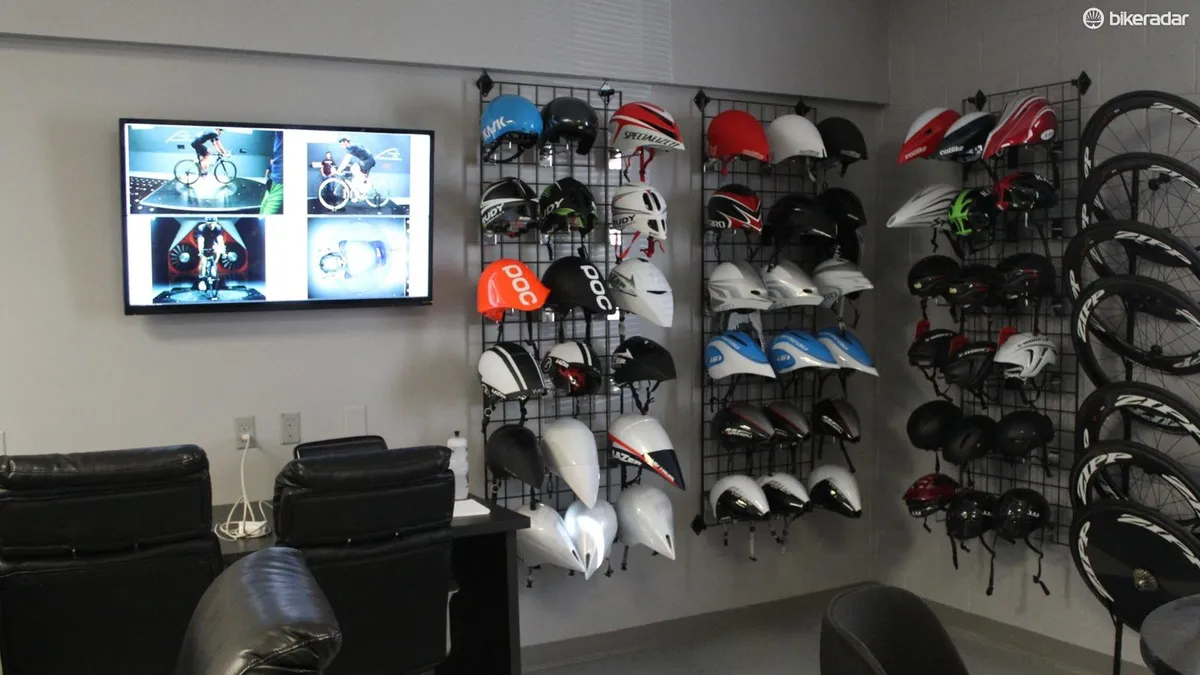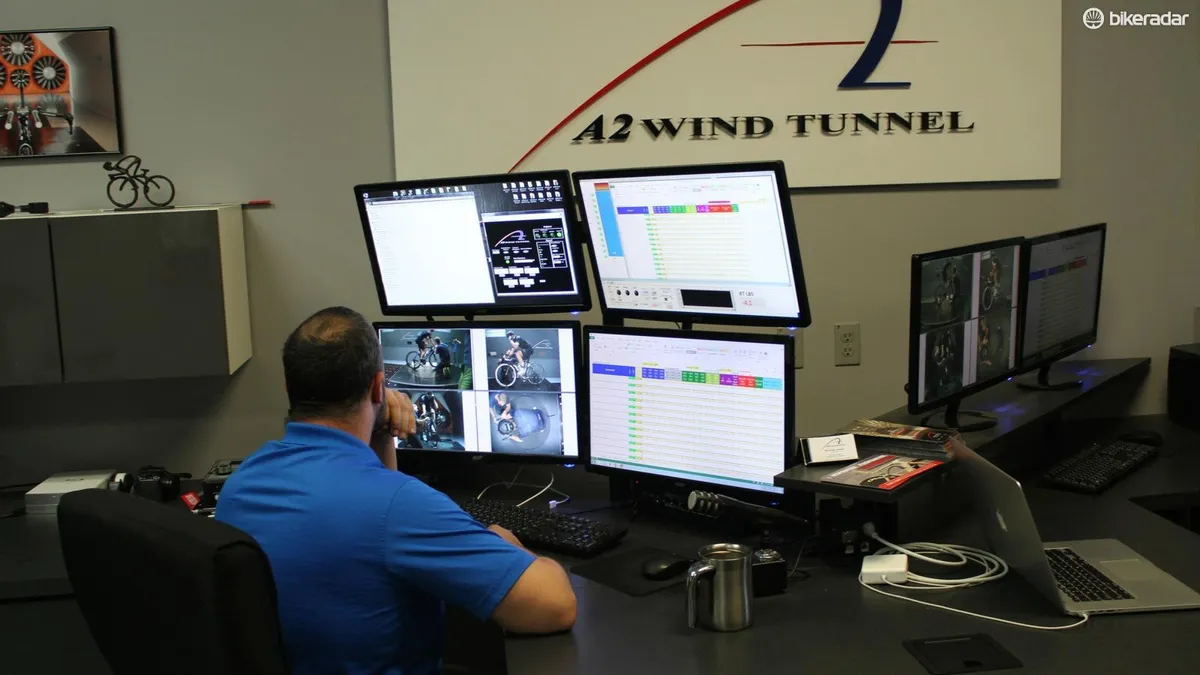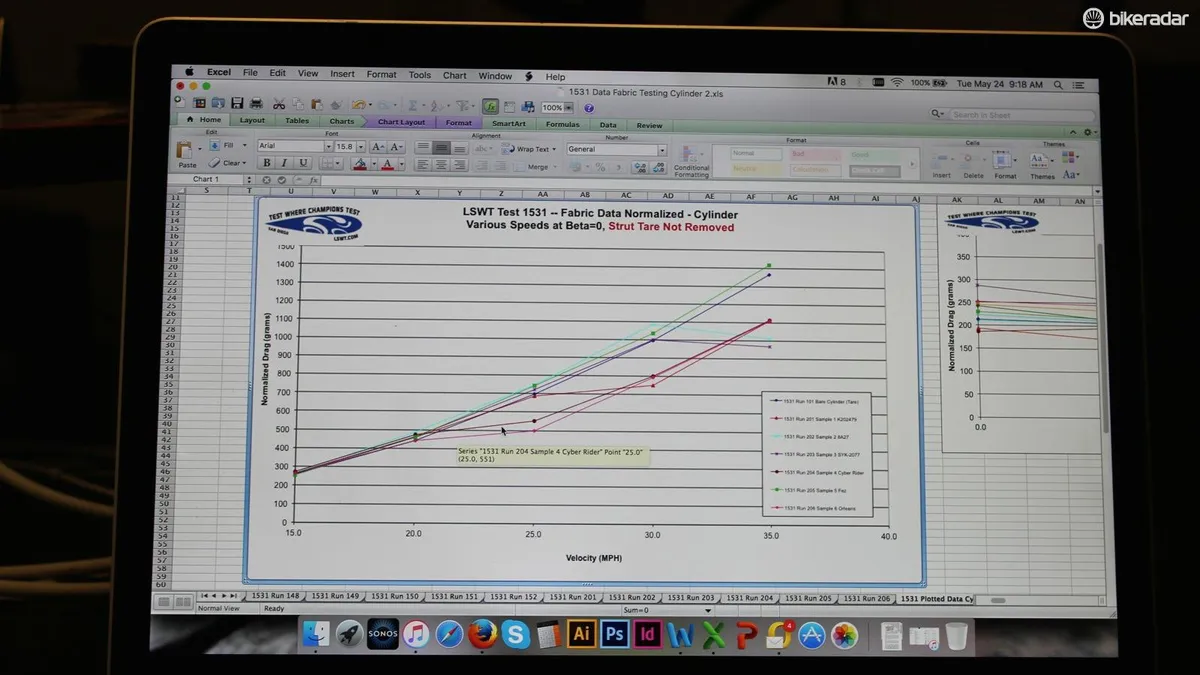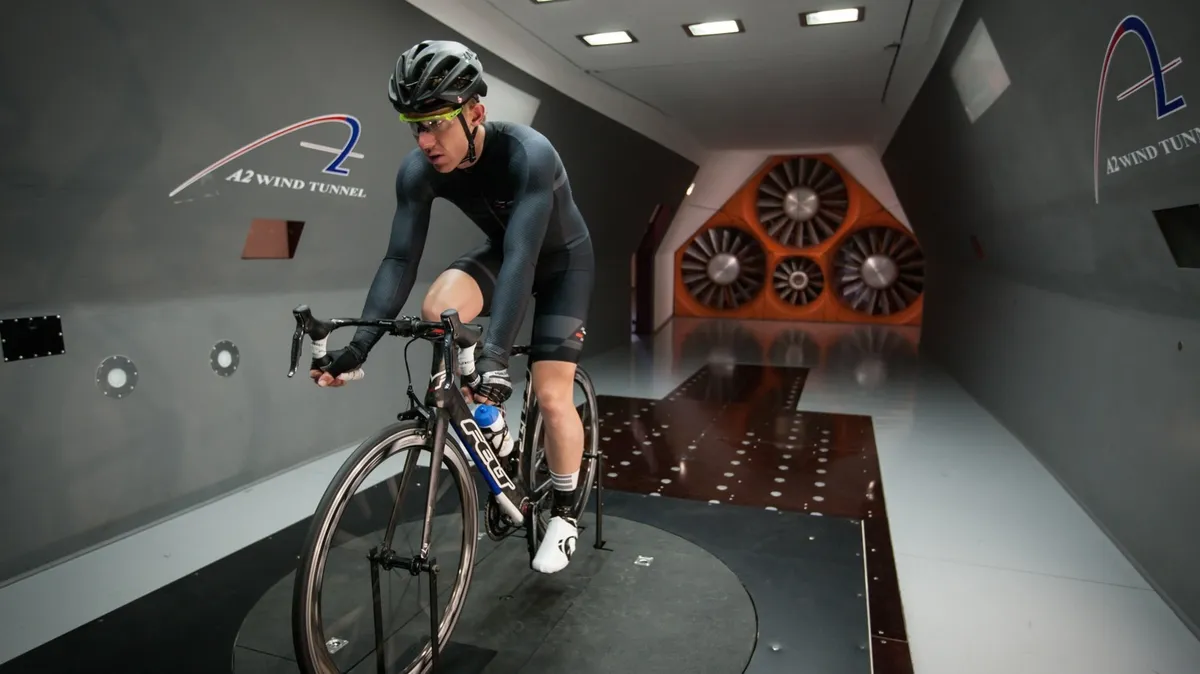Is wearing a smaller jersey faster? How much wattage does unzipping your jersey cost you? And how much of a speed difference is there between similar jerseys with different fabrics and different constructions? To answer these questions and more, Pearl Izumi visited the A2 wind tunnel in Mooresville, North Carolina in May, and BikeRadar tagged along.
- How aero is aero? Time savings by position and type of gear
- How to ride faster instantly without riding harder
- Pearl Izumi custom Speedsuits and Race Suits
As Pearl Izumi's director of innovation and advanced development, Ted Barber has worked with numerous pro teams and multiple wind tunnels on aerodynamic clothing design. Barber and Pearl Izumi road brand manager Andrew Hammond brought pro cyclists Daniel Holloway to A2 to test 10 different jersey designs, and to investigate questions like those above.
While most aero clothing wind-tunnel testing is done on a time trial or triathlon bike, Pearl Izumi tested Holloway on a road bike in a road position, as this is more relevant to more riders than a hyper-aero TT setup.
With the assistance of A2 manager Geoff Eaker, Pearl Izumi tested clothing at four angles and three speeds.

As speed ramps up, the power needed to overcome aerodynamic drag increases exponentially. “Say the wattage Holloway needs at 25mph is 250 watts,” Eaker said, specifying that this is just aero drag, not rolling or mechanical drag. “The wattage needed for him to hit 35ph in the same position is 695 watts.”
It is remarkable to watch how pros in wind tunnels instinctively get smaller in the wind tunnel
As speeds ramp up, getting into a more aerodynamic position of course is key. Just look at how pro riders tuck down low at critical points of a race, particularly on downhills. (It is remarkable to watch how pros in wind tunnels instinctively get smaller in the wind tunnel when the air speed ramps up and the wind starts whistling across their ears.)
Reducing drag and thus increasing speed via clothing is what Pearl Izumi and a few other performance-focused clothing brands are trying to do.
Having worked with pro teams like BMC, Garmin and SpiderTech, Barber went into A2 with a good handle on some basic aero rules about clothing. “Tight is the first thing,” Barber said. “The second thing is shape — our aero pieces are articulated for an on-bike fit. And the third most important thing is texture.”
Pearl Izumi used a fairly fast jersey as a baseline, the company’s Team Training Jersey, which was essentially the first aero jersey the company did back in 2007.
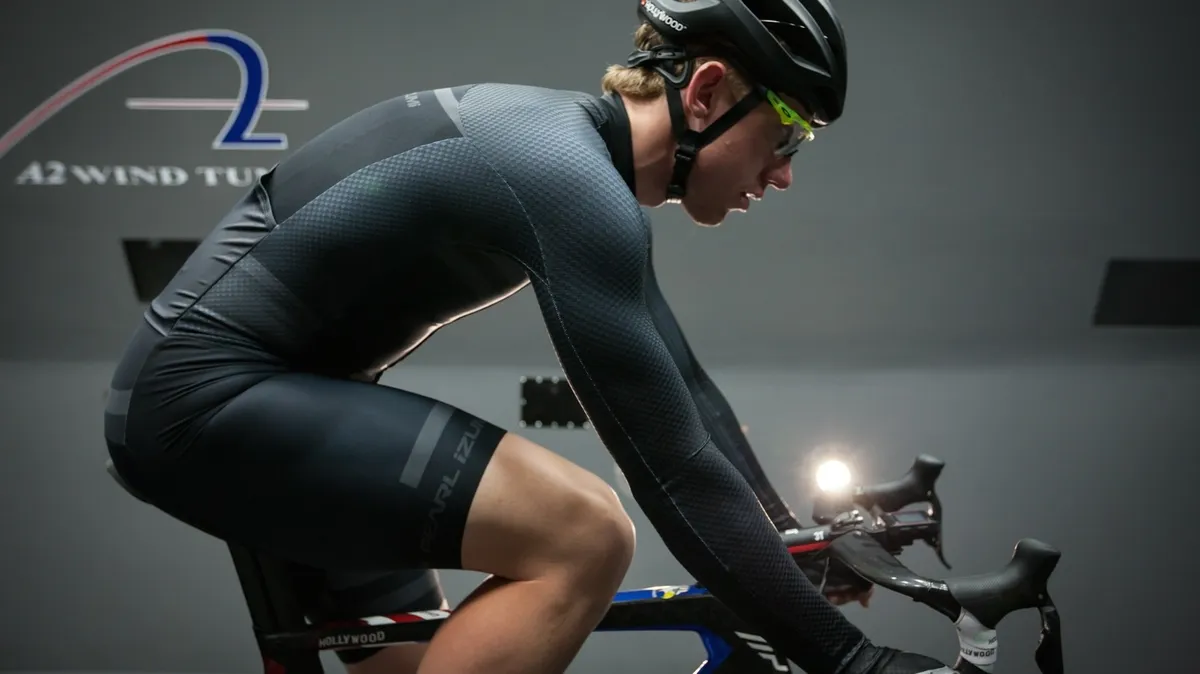
Pearl Izumi claims you can save as much as 30 watts by wearing a Race Suit (think skinsuit with pockets and fold-open front) compared with a regular jersey
While Pearl is still compiling the data, the fastest pieces were essentially skinsuits — the company’s Mach 5 SpeedSuit and one-piece Race Suits trumped even the fastest jersey-and-bib-short combo. Pearl’s Race Suits are one-piece like skinsuits, but the top can fully unzipped and flapped open at the waist like a jersey. They come with and without pockets (which didn’t make much of an aero difference in the A2 tunnel, Hammond said).
“In the drops position, we were really surprised at how fast the race suits were — within a watt or two of the Mach 5 SpeedSuit — and the long-sleeve version was notably faster than the short-sleeve options over 30mph,” Hammond said. “If you’re doing a road race or a crit, the race suits are your best bet, and go long sleeve if you can.”
'Of course, the higher the speeds the higher the savings'
Hammond said Pearl’s Speed Jersey saved about 20 watts at typical race speeds of about 30mph over a normal jersey, and the race suits are more than 30 watts faster. “Of course, the higher the speeds the higher the savings,” he said.
Barber has spent countless hours tinkering with material types and construction details. Some of the fast jerseys now, for example, have a seam down the front of the arms that serves as a small trip switch that allows the air to more smoothly flow around the rest of the jersey.
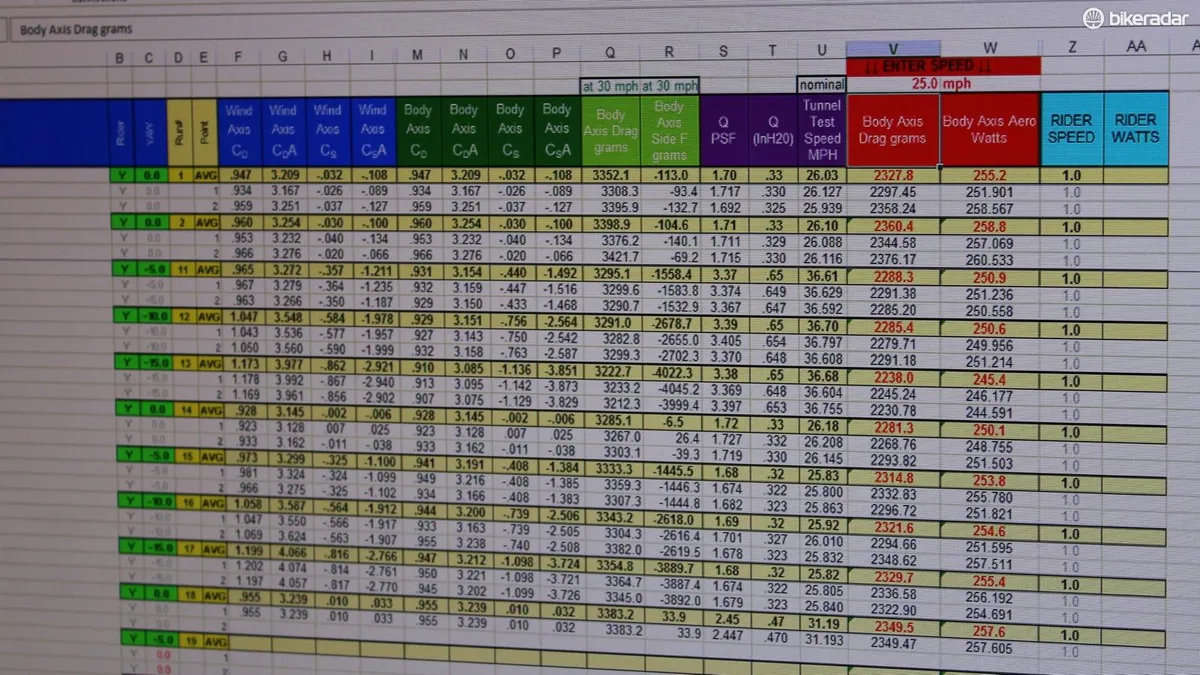
Aero testing is an involved, number-heavy process
This is a detail he has to educate sponsored riders about, as they otherwise just yank the seams back to the sides of the jersey.
The biggest surprise of the day involved unzipping jerseys.
“We were planning to make a video talking about how much a fully unzipped jersey or vest would cost you, but it turned out to be less than 10 watts in each case at 30mph,” Hammond said. “I still wouldn’t do it in a race, but it’s not the end of the world.”
'If you’re wearing an engineered aero garment, stick with the size chart'
Another question Pearl set out to answer: is tighter faster? Barber had already found that certain materials actually get slower when they are overly stretched, as their properties change when pulled open. Hammond said that some pro riders want to wear a size down from where Pearl staffers had measured them, so the company wanted to test it objectively.
“The conclusion, at least for our speed products, was no,” Hammond said, meaning that a smaller size was not faster. “We saw that the correct size suit was faster head-on and nearly identical at 5 and 10 degrees. We did show the smaller suit was faster at 15 angles, but that’s the least common angle.”
Hammond and Barber’s takeaway is pretty straightforward: “If you’re wearing a standard flappy jersey, tighter most likely is faster,” Hammond said. “If you’re wearing an engineered aero garment, stick with the size chart.”
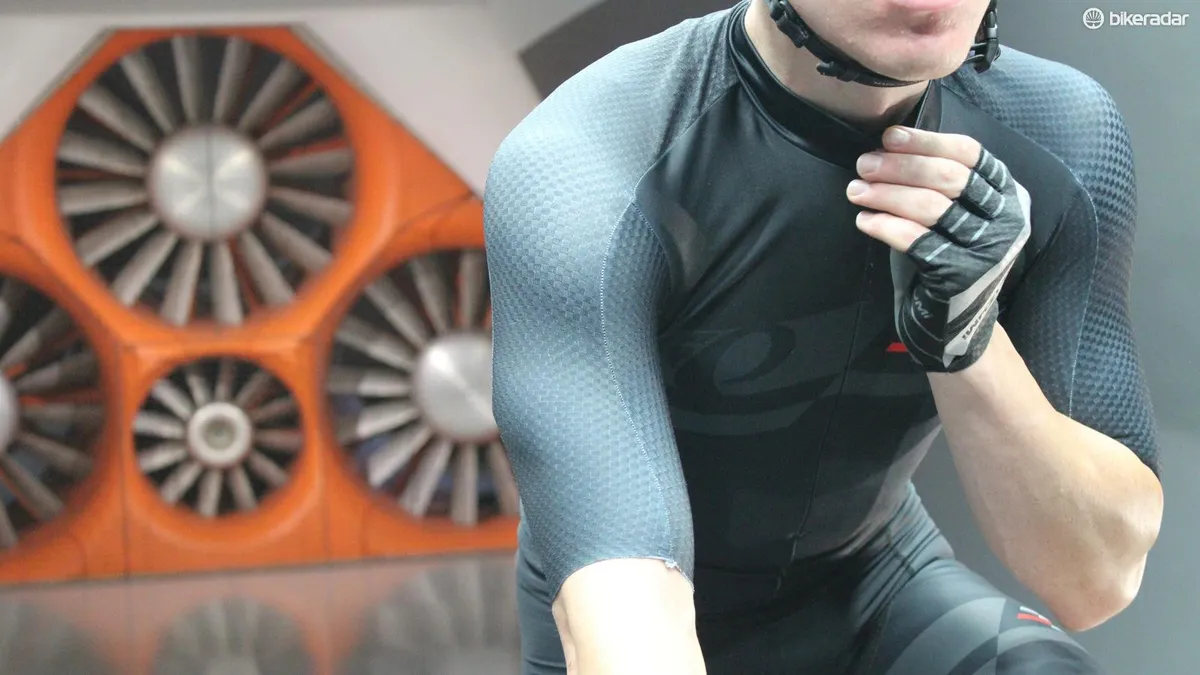
Want to go fast? Wear a snug jersey with longer sleeves and zip it up

